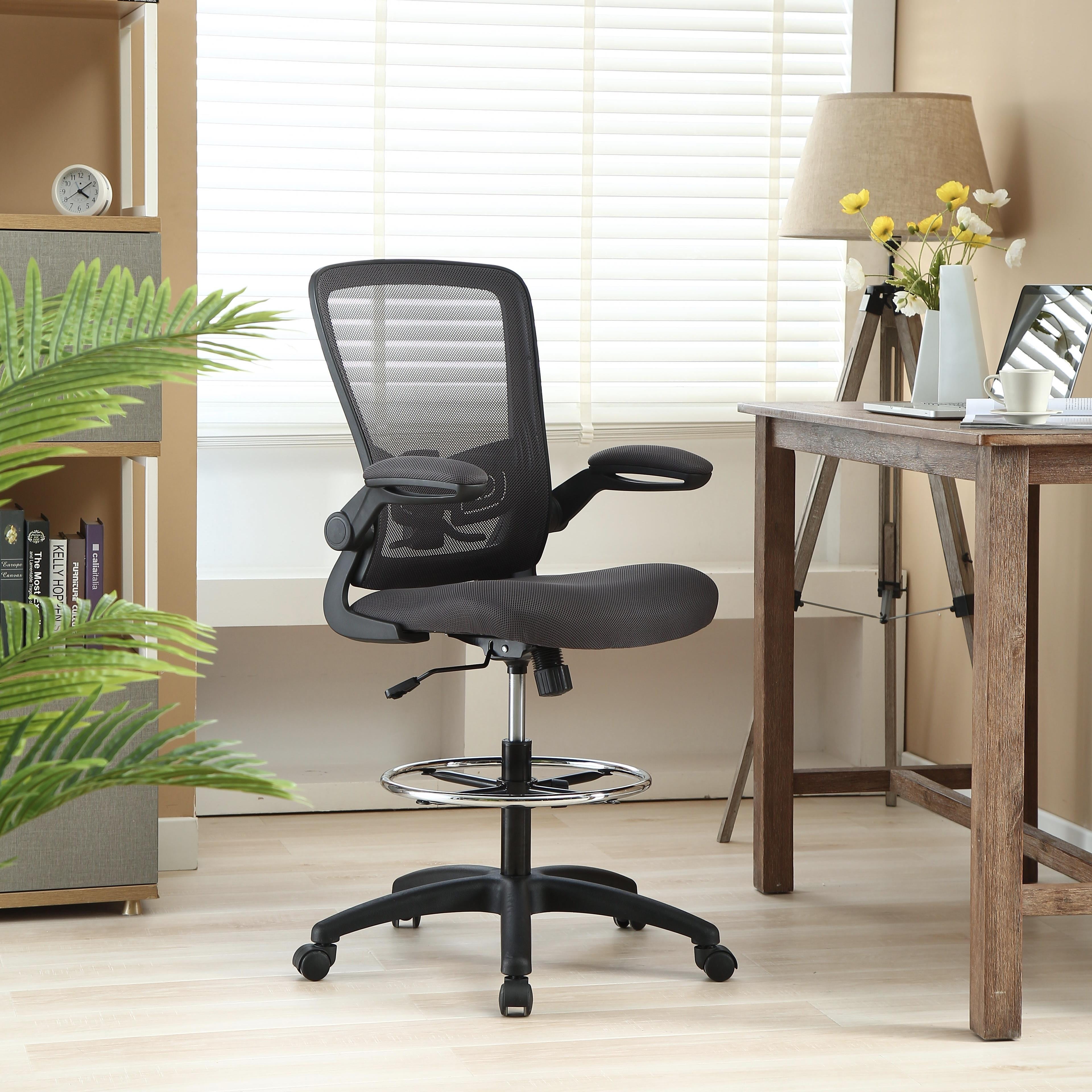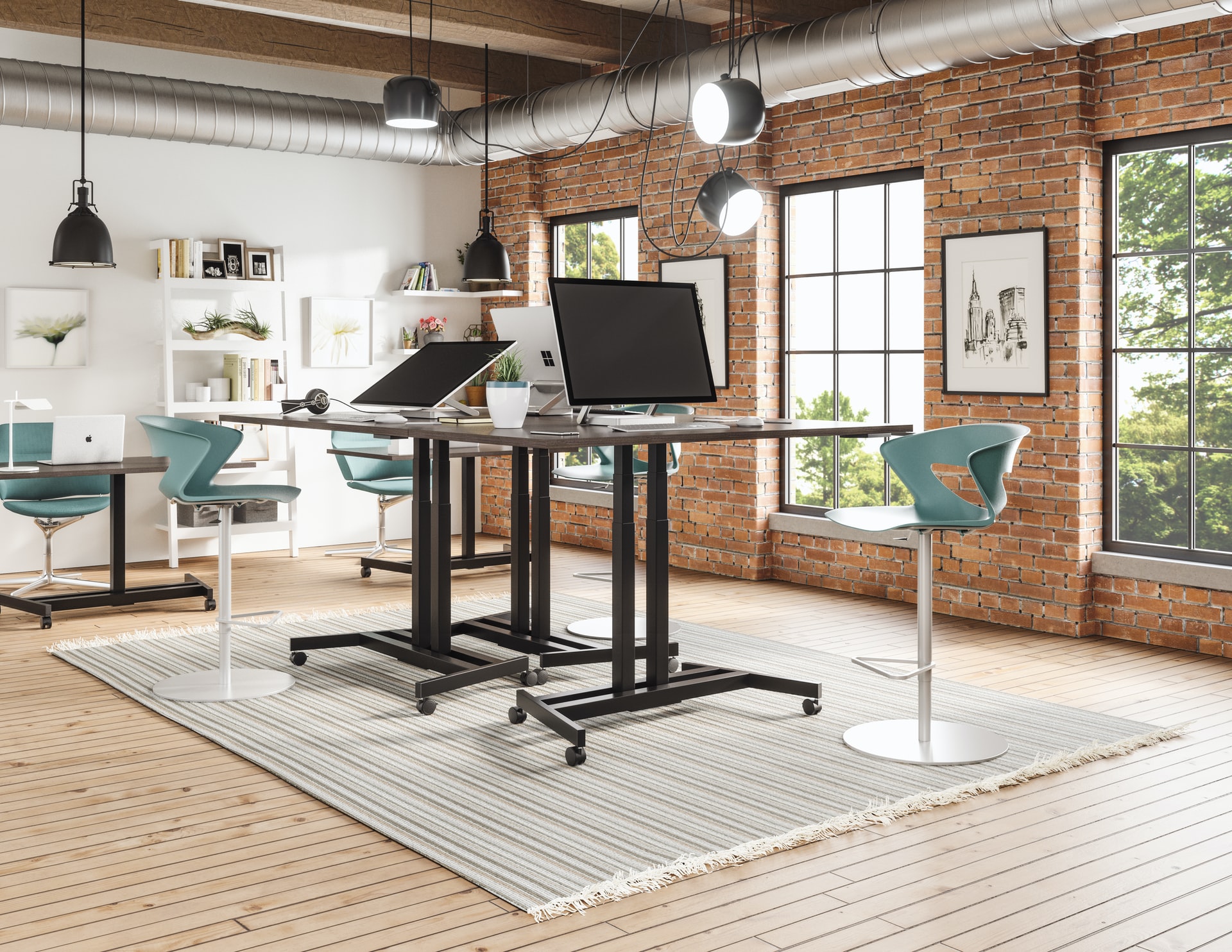Comparing Chair Types for Standing Desk Use: Best Office Chair For Standing Desk

Choosing the right chair to complement your standing desk is crucial for maintaining comfort and productivity throughout the workday. The ideal chair will depend heavily on your individual needs, work style, and body type. While a standing desk promotes movement, incorporating a supportive chair allows for periods of seated work, reducing strain and fatigue. This comparison explores various chair types to help you make an informed decision.
Saddle Chairs
Saddle chairs encourage an upright posture by preventing you from slumping. Their unique design promotes a more open hip angle, which can alleviate pressure on the spine.
- Pros: Promotes good posture, improves circulation, can reduce back pain for some users.
- Cons: Can take time to adjust to, may not be suitable for all body types, potentially uncomfortable for prolonged use, can require a specific desk setup.
Kneeling Chairs
Kneeling chairs encourage a forward-leaning posture, shifting weight to the knees and thighs, reducing pressure on the lower back.
- Pros: Encourages good posture, alleviates lower back pain for some, promotes core engagement.
- Cons: Can be uncomfortable for extended periods, may cause knee pain for some, not ideal for all body types or work styles, can restrict movement.
Active Chairs
Active chairs are designed to promote movement and engagement throughout the workday. They often feature a variety of adjustable components and encourage dynamic sitting.
- Pros: Encourages movement, improves posture, can increase energy levels, reduces stiffness.
- Cons: Can be expensive, may require a learning curve to master the optimal sitting position, not ideal for all work styles.
Traditional Office Chairs with Adjustable Height, Best office chair for standing desk
Adjustable height office chairs, when properly set up, offer a familiar and often comfortable seating option. The ability to adjust the height is particularly important when used with a standing desk.
- Pros: Comfortable, familiar, widely available, easily adjustable for height, readily accommodates various body types.
- Cons: Can promote sedentary behavior if not used in conjunction with standing, may not offer the same postural benefits as other chair types, requires careful adjustment to avoid slouching.
Chair Type Selection Based on User Needs
Consider the following hypothetical scenarios:
- Programmer: A programmer, spending long hours hunched over a keyboard, might benefit from an active chair that encourages micro-movements and prevents stiffness. The chair’s adjustability would allow for comfortable breaks from standing.
- Writer: A writer who requires long periods of focused work might prefer a traditional adjustable office chair with lumbar support. The comfort and familiar design would minimize distractions and promote sustained concentration.
- Graphic Designer: A graphic designer, who frequently shifts between detailed work and brainstorming sessions, could find a saddle chair beneficial. Its open hip angle promotes good posture, reducing fatigue during long design sessions.
Budget Considerations and Value for Money

Choosing the right standing desk chair involves a careful balance between features, comfort, and cost. Understanding the price spectrum and what influences it is crucial for making a smart purchase that won’t break the bank but will still provide years of reliable support. This section will guide you through navigating the financial landscape of standing desk chairs, helping you find the perfect chair for your needs and budget.
Finding the right chair for your standing desk involves considering a range of price points. The cost significantly impacts the quality of materials, features, and overall durability. By understanding these price categories, you can make a more informed decision.
Price Ranges for Standing Desk Chairs
The market offers a wide variety of standing desk chairs, spanning different price ranges. These can be broadly categorized into budget-friendly, mid-range, and premium options. The price greatly influences the materials used, the chair’s features, and the level of ergonomic support provided.
| Chair Model | Price Range | Key Features | Value Assessment |
|---|---|---|---|
| Generic Budget Office Chair (Example) | $50 – $150 | Basic adjustability, mesh or fabric covering, minimal lumbar support | Good (for occasional use or limited budget) |
| Mid-Range Ergonomic Chair (Example) | $200 – $500 | Adjustable height, lumbar support, breathable mesh back, armrests with adjustability | Excellent (good balance of features and price) |
| Premium Ergonomic Chair with Advanced Features (Example) | $500+ | Advanced lumbar support adjustments, multiple adjustment points, high-quality materials (leather or premium mesh), headrest, advanced ergonomic design | Excellent (for demanding users prioritizing comfort and longevity) |
Factors Influencing Chair Price
Several factors contribute to the price variation in standing desk chairs. Understanding these factors can help you justify the cost and ensure you’re paying for features that genuinely add value.
The materials used significantly impact the price. High-quality materials such as premium mesh fabrics, genuine leather, or robust metal components generally command higher prices due to their durability, comfort, and aesthetic appeal. Features such as adjustable lumbar support, height adjustment, armrest adjustments, and headrests also add to the overall cost. Brand reputation plays a significant role; well-established brands with a proven track record of quality often have higher price tags compared to lesser-known brands.
Determining Value for Money
Finding the best value for money means considering both the initial cost and the long-term benefits. A higher upfront cost doesn’t always translate to better value. Prioritize features that address your specific needs and work style. For example, if you spend long hours sitting, investing in a chair with excellent lumbar support and adjustability is crucial, even if it’s more expensive. Consider the chair’s durability and warranty. A chair with a longer warranty indicates the manufacturer’s confidence in its product’s longevity. Finally, read reviews from other users to gauge the chair’s long-term performance and satisfaction levels. A chair that provides years of comfortable and reliable support is a better investment than a cheaper chair that needs replacing frequently.
